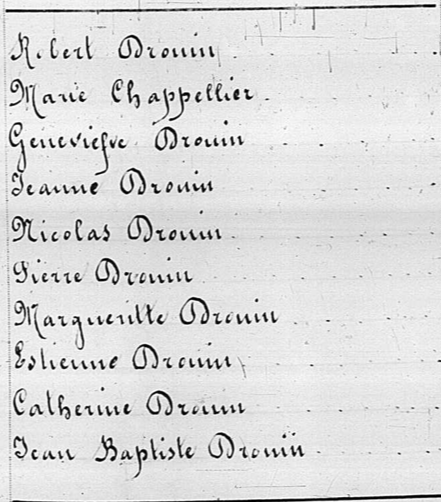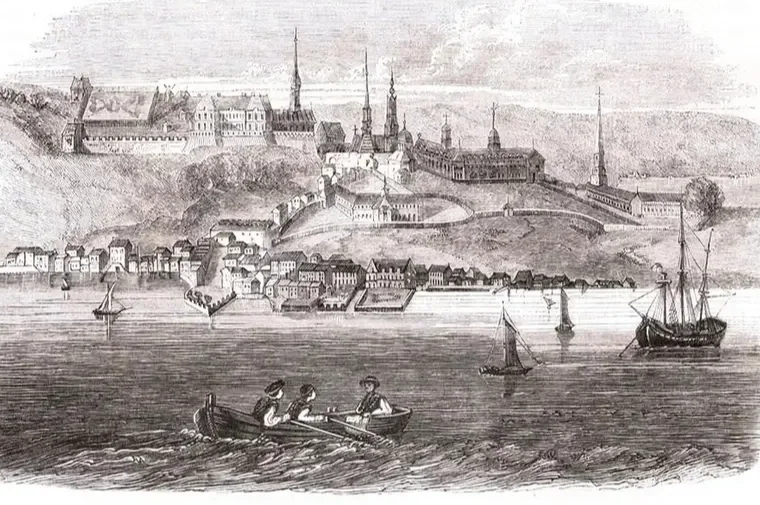The Storyline
"Real families.Real discoveries.Real stories."

Three Generations of Shrinking and Expanding
The Hamall family nearly died out. From Kate's six children in the 1880s, the Thomas Henry Hamall line eventually narrowed to just one great-grandchild—Thomas Kenny. And then he had six children. That's how close this family came to extinction. That's how much one generation can change everything.
Part of the Storyline Genealogy Series: proving that the stories worth telling are the ones that can be proven true.

The Father Who Tried
The wedding photo proves he was there. The Miami records show he moved 1,200 miles to be in the same city as his son. The newspaper clippings prove he rebuilt his life after devastating loss. They were together in the early 1950s—father and son, both adults, both working in Miami. Then in 1957, a career transfer moved his son away. The distance wasn't abandonment—it was logistics, career mobility, and the complications of life. And the pocket watch with the initials TEH, worn to every daughter's wedding, proves the connection endured. This is the story of Thomas Eugene Hamall—the father who tried.
Part of the Storyline Genealogy Case Studies Series: Three Thomas Hamalls – Examining how economic devastation, career mobility, and geographic distance shaped a father-son relationship across decades—and how a pocket watch tells the story effort and connection endured.

Mothers and Sons: A Working-Class Family Pattern
Three generations. Three mothers. Three sons. Three households built together. From Kate Hamall in 1911 to Margaret Kenny Hamall in 1985, a pattern repeated across 75 years—not because of dysfunction, but because this was how working-class families survived. Understanding multi-generational households as economic strategy, not pathology.
Part of the Storyline Genealogy Case Studies Series: Three Thomas Hamalls – Examining how economic reality shaped family structures across three generations of working-class Chicago families.

The Mystery Man :
In a 1947 photograph, two men sit together at the US Capitol—one is Thomas Eugene Hamall, age 43. The other remained unidentified for 75 years. Through forensic photo analysis, family tree reconstruction, and a 1968 high school yearbook, we finally discovered who he was—and uncovered a poignant story about family connections maintained across three fractured generations.

They Were Never Photographed Together
They were never photographed together—but forensic analysis proved they were there. When three men named Thomas Hamall were separated by divorce, distance, and death, photographs in separate frames became the evidence that proved their connection across 87 years.
Part of the Storyline Genealogy Series: proving that the stories worth telling are the ones that can be proven true.

The Widow Who Never Lost: Marie Chapelier's Legal Victory
Marie Chapelier arrived in New France as a penniless widow in 1649. She could read and write—a rare skill that would prove decisive 44 years later. When her stepdaughter challenged her property rights in 1693, Marie fought back through five levels of colonial courts. The final score: 9-0. She died undefeated three months after her final victory. This is the story of strategic survival, legal warfare, and one woman's refusal to be defeated.
Part of the Storyline Genealogy series: From marriage contracts to courtroom victories—one widow's signature tells a 48-year story of literacy, strategy, and undefeated determination.

When One Breakthrough Unlocks Everything
The breakthrough came in Year 5. After seven years of searching for John Kenny among dozens of other John Kennys in Brooklyn, the answer appeared when we stopped asking "Which John Kenny?" and started asking "What made THIS John Kenny unique?" That single shift—from name-based searching to occupational tracking—unlocked seven major discoveries in six months and revealed five generations spanning 154 years.
Part of the Storyline Genealogy series: When traditional research methods fail, innovative approaches unlock the impossible cases that define professional genealogy.

The Woman in the Portrait: Aunt Maime’s Story
For 90 years, her portrait was preserved but unlabeled. Through death certificates, census records, and a 7-year search, we finally discovered Aunt Maime's extraordinary story of sacrifice and survival.
Part of the Storyline Genealogy Series- Uncovering the Stories Behind the Names

Four Generations in Hats: A Brooklyn Story of Resilience
After seven years of research into Brooklyn's mat maker John Kenny, one discovery changed everything: the hats weren't just about his craft—they were about survival. From 1888 to 1957, four generations of Kenny women wore elaborate hats in family photographs. Each hat told a story: Mary Agnes at age 12, seven years after her father's death. Lillian and Helen as toddlers in luxury millinery. Lillian's timeless taupe hat at her daughter's 1957 wedding—so stylish it would turn heads 61 years later. But the real story wasn't the hats themselves. It was the network of devoted women—Aunt Maime, Aunt Lillian, grandmother Ann—who kept the family together through impossible tragedy. John Kenny's craftsmanship created more than fashion. It created a legacy that four generations of women would carry forward with dignity, resilience, and style.
Part of the Storyline Genealogy series: When one craftsman's legacy becomes four generations of resilience—the stories objects can tell.

The Aversion: A Family War Over a Fille du Roi's Estate
On February 28, 1697, Provost Judge Guillaume Roger wrote a word that changed everything: "aversion." He wasn't describing a mild disagreement—he was documenting hostility so severe that normal legal proceedings couldn't work.
Who were these people who hated each other so intensely? A 52-year-old widowed farmer named Pierre Guilbault and his three adult children: Marie (29), Joseph (25), and Étienne (22).
What were they fighting over? Their dead mother's estate.
Louise Senécal arrived in Quebec in 1667 as a Fille du Roi—a King's Daughter sponsored by Louis XIV. She married in eleven days, raised four children, and built a prosperous farm over 26 years. When she died in 1693, her husband tried to remarry immediately and refused to settle her estate.
Her children waited nearly four years. Then they struck.
This is the story of how three siblings used the 17th-century court system to honor their mother's memory—and how primary sources documented a family war that would end in death, division, and justice.
Part of the Storyline Genealogy series: Uncovering the extraordinary stories hidden in ordinary family histories, one ancestor at a time.

Crossing the Atlantic: How Louise Senécal Became a Fille du Roi
Before the family war that required judicial intervention, there was a ship. Louise Senécal ignored the warnings of 20 women who filed formal complaints about conditions aboard the St. Louis de Dieppe. She crossed the Atlantic anyway, survived 107 days at sea, and married a man who had failed twice before to secure a bride. Eleven days after stepping off the ship, she became Louise Guilbault of Charlesbourg.
Part of the Storyline Genealogy series: Uncovering the extraordinary stories hidden in ordinary family histories, one ancestor at a time.

The Hidden Years: Marriage, Crisis and the Same-Day Contract
Pierre Guilbault appeared before a notary on April 13, 1693, to sign a marriage contract with 20-year-old Jeanne Morin. It was the same day his wife Louise died. The shocking timing—documented in colonial records—reveals the tensions that had been building in a marriage that survived separation, reconciliation, and 26 years of frontier life, only to end in a family war over Louise's estate.
Part of the Storyline Genealogy series: Uncovering the extraordinary stories hidden in ordinary family histories, one ancestor at a time.

When DNA Proves What Documents Can’t: The O’Brien Family Discovery
After five years of research found no proof, DNA testing solved a 150-year-old mystery in three months. The breakthrough came when seemingly unrelated matches all pointed to the same Kentucky family.
Part of the Storyline Genealogy series: How DNA testing solved a brother relationship that five years of traditional research couldn't confirm

Hero in the Depths: Cherry Mine Disaster
In November 1909, Captain Thomas P. Kenny of the Chicago Fire Department received an urgent call that would define his 44-year career. Racing 83 miles by emergency train in just 62 minutes, Kenny and his specialized crew arrived at the Cherry Mine disaster - America's deadliest mine fire. His technical expertise in fighting underground blazes helped create the conditions that enabled one of the most miraculous rescues in industrial history: 21 miners found alive after eight days entombed underground.
Part of the Storyline Genealogy series: Uncovering the extraordinary stories hidden in ordinary family histories, one ancestor at a time.

The Missing Brother Mystery
Sometimes the most puzzling genealogical mysteries hide in plain sight. One census entry proved particularly haunting: 'Thornton Hammil' listed as Owen Hamall's brother in 1880 Chicago—but no such person seemed to exist anywhere else in the historical record. The breakthrough came where it often does in immigrant family research: in the margins of church records, where community relationships revealed themselves through acts of faith and mutual support.
Part of the Storyline Genealogy series: When mysterious census entries unlock complex family stories that span continents and generations
Finding Marie Josephte: How One Ojibwe Woman Emerged from Two Centuries of Silence
For generations, she existed only as "Sauvagesse"—the nameless Indigenous wife of a French-Canadian voyageur. Like thousands of Indigenous women erased from colonial records, Marie Josephte Abitakijikokwe seemed destined to remain forever unknown.
But in 2024, using FamilySearch's new Full Text Search feature and systematic research across five Quebec parishes, her full Ojibwe name emerged from a 1801 marriage record. Across 15 documents spanning nearly a century, Marie Josephte transformed from "unknown Indigenous woman" to one of the best-documented Indigenous ancestors in Quebec parish records.
This discovery proves your "nameless" ancestors may be findable—if you know where and how to look.

The Irish Immigrant’s Hidden Fortune
When I first began researching my own O'Brien family line, I expected the usual Irish immigrant story: poverty, hard work, gradual success. What I discovered was far more extraordinary—a tale of innovative marketing, federal criminal prosecution, and a cruel twist of fate that left four orphaned children impoverished while a fortune worth $250,000 in today's money sat hidden in the walls of their former home.
Part of the Storyline Genealogy series: Uncovering the extraordinary stories hidden in ordinary family histories, one ancestor at a time.

The Fire in Your Blood: From Chicago's Destitute List to Family Inspiration
When Owen Hamall died of meningitis in 1898, he left behind more than just a grieving family—he left behind a story of resilience that would echo through generations. This story was discovered not through grand family legends, but through a single newspaper clipping that reduced his family's struggle to twenty-three stark words: "Mrs. Hammall, 94 Sholto Street, two small children and a blind husband."
This entry in the Chicago Tribune's "Destitute List" from January 26, 1897, could have been just another piece of historical data. Instead, it became the foundation for understanding what it truly meant to be a Hamall descendant—and why some family stories deserve to be told as letters of strength to future generations.
Part of the Storyline Genealogy series: When family tragedies become letters of strength to future generations.

Four Words That Solved a Mystery
After seven years of failed research attempts with dozens of John Kennys in Brooklyn records, a single city directory entry changed everything. Discover how 'Kenny, Elizabeth, wid. Richard' unlocked an impossible genealogical puzzle and revealed an innovative research methodology.
Part of the Storyline Genealogy series: When traditional research methods fail, innovative approaches unlock the impossible cases that define professional genealogy.

How Technology Solved a 70-Year Philippine Genealogy Mystery
Have you hit a brick wall researching your Filipino heritage? The Tamayo family case study reveals how breakthrough technology transformed a 70-year genealogy mystery into a complete family saga. Learn how FamilySearch's revolutionary Full Text Search uncovered property records, marriage documentation, and financial strategies that traditional databases missed entirely.
Part of the Storyline Genealogy series. When traditional genealogy databases fail to yield results, cutting-edge search technology uncovers the hidden records that transform research dead ends into comprehensive family sagas.
